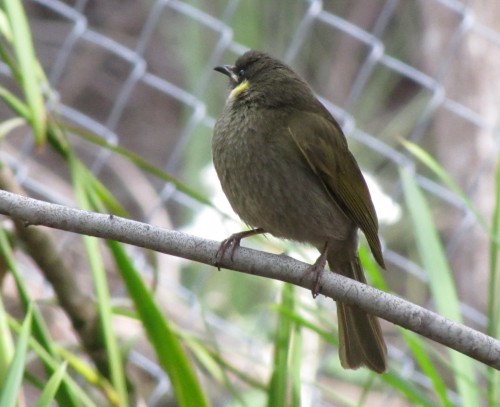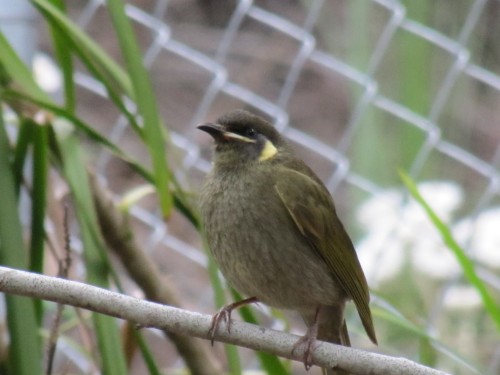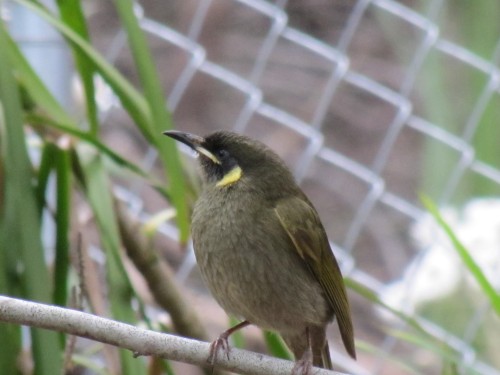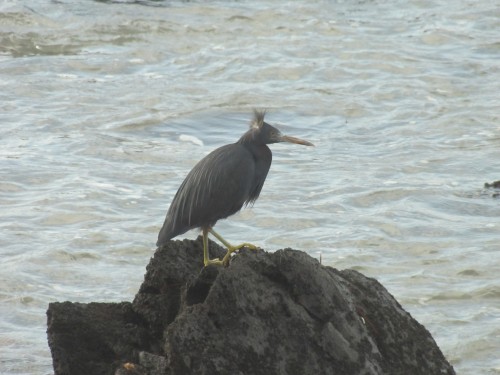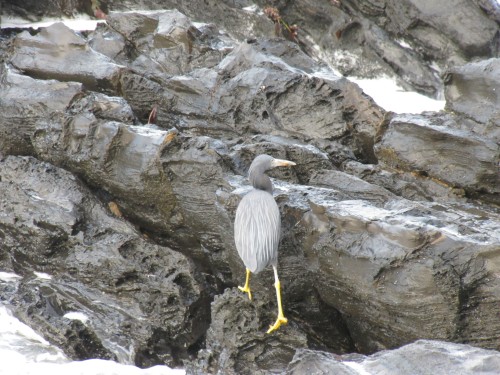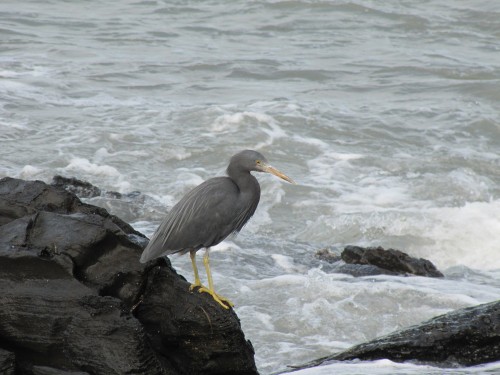Have the babies flown the nest?
We have a pair of Willie Wagtails who live in our garden. They often come very close to us as we work in the garden, especially when we are weeding or digging the garden beds. They are quite unafraid of us. Every year they build a nest somewhere near the house. Quite often they will even have a second brood of young ones.
This year I noticed them building a nest a few days before we went to Sydney for just over two weeks. I checked on our return and one of the adults was sitting on the nest; I didn’t know if there were eggs or chicks in the nest and didn’t want to disturb the parent bird. Now two weeks later and the nest is empty – in fact, it’s on the ground.
Enough time has elapsed for the eggs to have hatched and the young to have flown. Strange then that we haven’t seen the little ones begging to be fed. I suspect that the nest may have been raided by some form of predator: raven, magpie, currawong, falcon – even a stray cat that has been lurking in the vicinity.
All I can hope is that they decide to nest again – in a more secure location.
King Parrots in Artarmon, Sydney
When we go to Sydney to visit family, we stay with our son and his family in Artarmon, several train station stops north of the Harbour Bridge. This area has many trees lining the streets, many more in gardens and there are several parks in the vicinity. While the birding is not great in terms of numbers of species, the bird life is still quite interesting.
The common species include: Noisy Miners, Australian Magpies, Australian Ravens, Common Mynas, Rainbow Lorikeets, Rock Doves, Laughing Kookaburras, Grey Butcherbirds and Pied Currawongs. From time to time I see Welcome Swallows, Galahs and Sulphur-crested Cockatoos. On one visit we even had a Boobook Owl in a tree in the garden.
More recently, my son – who has just a little more than a passing interest in birds – reported seeing a small group of 4 or 5 King Parrots frequenting his garden, or the street trees nearby. He hasn’t had a chance to get a photo yet, and I didn’t either on our recent visit last month. I did get several good views of them flying around nearby, but no clear views within camera range. Instead, I’ve included today a few photos of this species seen elsewhere.
Lewin’s Honeyeater
On our recent visit to Sydney to stay with family, my wife and I took out an afternoon to visit the Ku-ring-gai Wildflower Garden near St Ives. we’d been here on a number of other occasions and usually enjoyed the visit.
The gardens are open daily from 8am to 5pm and are accessed off Mona Vale Road. There is no entry fee and the education centre is available for functions for a fee. Extensive walking trails and picnic areas make this a very attractive place to visit, especially for birders and native plant enthusiasts like my wife.
Over a number of visits I have sometimes been a little disappointed with the bird life, but mostly it is quite good. The thick vegetation allows a wide range of small bush birds to hide in safety, but this sometimes can cause a little frustration identifying them, and especially challenging for photography. It was with delight then, that I captured reasonable shots of a Lewin’s Honeyeater. It posed for my camera for several minutes, perching on an exposed branch in range of my lens.
This species is found along the eastern coastal regions of Australia. This was a particularly pleasing sighting as I’ve only ever seen it on several previous occasions.
Review: Brushed by Feathers
Review: Brushed by feathers: a year of birdwatching in the west by Frances Wood (2004, Fulcrum Publishing, Colorado).
What a delightful book. I was given a copy by someone (a friend of a friend) who attended one of my bird talks. I am normally reluctant to let people lend me books to read, no matter how interesting the subject matter because I have so many books and magazines of my own waiting for my attention. Still, out of politeness I accepted this title, and I’m so pleased that I did.
At first I only read a few pages in bed before turning off the light. As I moved further into the text I became hooked – no, spellbound. This is one special book, and all about birds I know nothing about. The author lives on Puget Sound in Washington State near the Pacific Ocean. It is a significant body of water for many water-bird species and the hinterland a passageway for many other migrating species.
The book is an account of a year, month by month, in the birding life of one small area: the author’s small acreage around her home – with occasional trips elsewhere or reminiscing accounts of earlier trips and experiences. From the Barn Swallows nesting under the eaves to various hummingbirds visiting her feeder through to rare encounters, the author takes the reader on a journey of wide-eyed, wondering and fascinated observations of the daily lives of her feathered friends.
Her descriptions of the house and garden, the local environment, weather and daily happenings take the reader into her confidence until we feel almost part of her family. Her lyrical style draws the reader on from bird to beautiful bird, each described with care – as if each was her personal favourite.
The author’s web page can be seen here.
Highly recommended.
Eastern Reef Egret, The Bluff, Victor Harbor
Last month we went on a day trip with friends of ours to Victor Harbor. We primarily went to see the whales but in that quest we were unsuccessful. Best thing we saw was several seals. It was a wild stormy day and I guess the whales used their common sense and stayed under water as much as possible.
During the afternoon we drove to the base of The Bluff, a prominent hill on the south western edge of town. On the short drive to the fishing jetty there are many rocky outcrops close into shore. I’ve always found this spot to be good for birding. I was not disappointed on this occasion either.
This solitary Eastern Reef Egret (also called Eastern Reef Heron) was busy feeding around the rocks, the photo above showing he has a “crest” – it’s actually the blustery wind giving the bird a “bad feather day”.
This species in interesting in that it can be found in both the dark morph, shown in these photos, and a white version. As far as I know this species is not very commonly seen in South Australia, so I have reported this sighting to Birds SA. In fact, I’ve never seen it in South Australia myself. I’ve only seen it twice before – both times in Western Australia many years ago.
This species is not to be confused with the White-faced Heron, shown in the last photo below.



